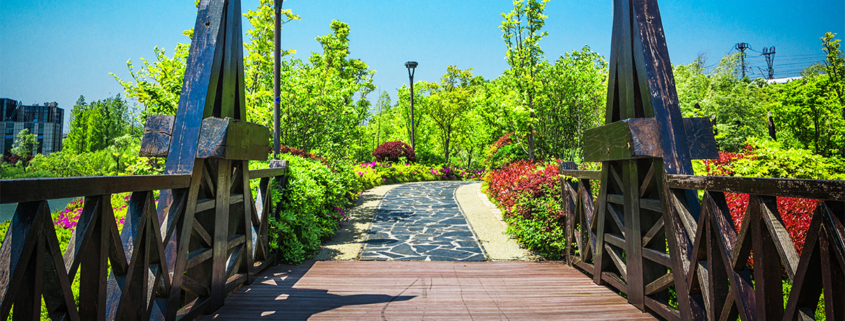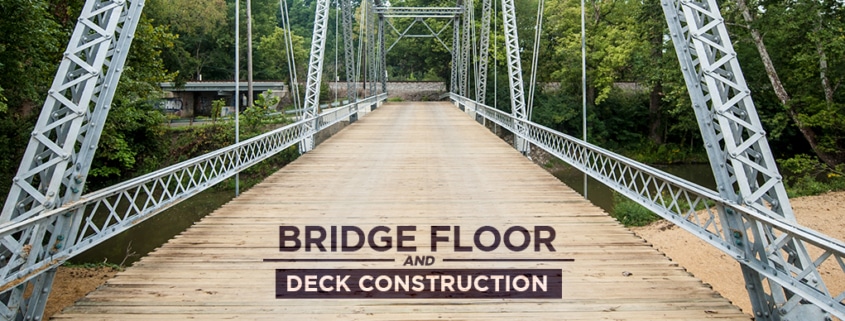Have you ever passed by an abandoned structure that’s fallen into disarray and thought, “What a waste?” Luckily, many of these eyesores have been turned into beautiful, green spaces for public recreation. Here are some examples of neglected public infrastructure converted into green spaces and why they’re so great for the community!
Public Infrastructure as Parks
Castlefield Viaduct Sky Park – Manchester, UK
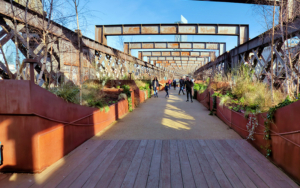
This viaduct in Castlefield, the oldest neighborhood in Manchester, was built in 1892. It was originally used to carry rail traffic in and out of Manchester Central Station. When the viaduct fell out of use, it sat unused for over 50 years. Now, it has been beautifully repurposed and renovated to serve as Manchester’s new “garden in the sky’”.
Promenade Plantée – Paris, France
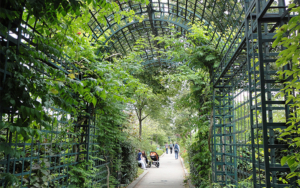
Another converted, abandoned viaduct, the Promenade Plantee in Paris is a magical, green walkway that sits 10 meters above the street and actually served as the world’s first elevated walkway in 1993. The beautiful stroll begins at the Bastille, winds through the Gare de Lyon and Bois de Vincennes for three miles, and finishes at the Bois de Vincennes.
High Line – New York, New York, USA
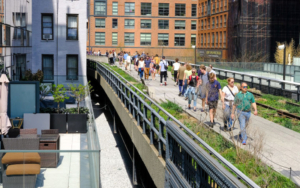
The High Line in New York is a continuous, 1.45-mile-long, elevated green walkway that starts on the west end of the Garment District and ends in Chelsea. This incredible park was previously a railway called the West Side Elevated Line but fell into disuse in the 1980s.
The High Line was set to be demolished before Joshua David and Robert Hammond founded the Friends of the High Line organization and fought to save and convert the structure into a public space.
Bridge of Flowers – Shelburne Falls, Massachusetts, USA
This bridge was built in 1908 for trolley use, from the railroad yard in Buckland, across the Deerfield River, to the nearby factory towns. As cars took over the transportation industry, the trolley bridge became obsolete in 1927.
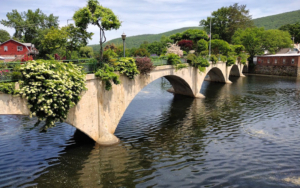
Two years later, city locals and members of the Shelburne Falls Women’s Club began to convert the bridge into a public garden, using supplies from their gardens. Today, the bridge serves as a landmark for locals and visitors alike to marvel at the gorgeous flowers and the spirit of volunteerism that it took to make this public space a reality.
Utilizing unused public infrastructure for public use is not only good for community morale, but it also has positive economic and environmental impacts.
Benefits of Converting Public Infrastructure to Parks
Besides turning trash into treasures, there are many benefits to converting public infrastructure into recreational, green spaces for the community:
Community Health:
Having access to more public green spaces, locals have greater opportunities to exercise, gather as a community, and absorb some sunshine and fresh air.
While the public health crisis continues to skyrocket, including increases in heart disease and obesity, making the effort to incorporate more of these green spaces for public use is essential to promoting the health and wellness of the community.
Environmental impact:
The existence of these spaces promotes biodiversity in largely urban areas: community gardens with regional plants for pollinators. Through the addition of trees and other vegetation, these spaces also lessen air pollution and the excessive heat that steel and concrete collect.
Nod to local culture:
Enlisting locals to use their voices and creative expression in these new community spaces is important. Since these parks will be used by the community, they should reflect the voices of those who live there. Artists, musicians, and local business owners can all gather here and use these spaces to promote accomplishments and community interests.
Reusing old structures:
Reusing existing public infrastructure instead of demolishing and replacing it is not only more cost-effective but also more environmentally impactful. Why tear down an old bridge or railroad and build condos when you can convert the space into a community park?
Connecting Communities Across the World
US Bridge serves communities around the country by building durable, reliable bridges quickly and efficiently. We use only the best tools and techniques, relying on our team of experts to ensure that your project is a strong reflection of your community.
Contact us for a free estimate, or use our industry-leading Bridgescope tool to begin planning your project now!

